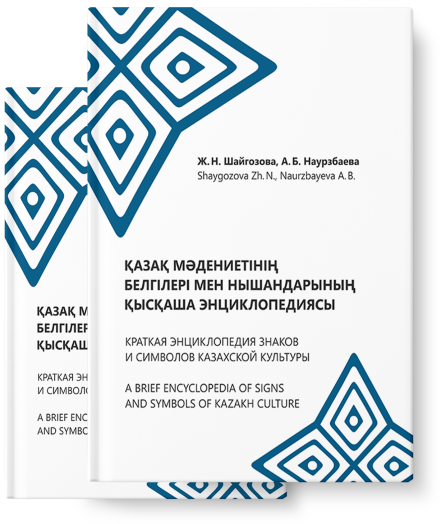
A short encyclopedia of
Signs and symbols of
Kazakh culture

In Turkic belief, the goddess Umay descends to earth leaning on two birch trees. The Siberian Turks retained the idea of the birch as a nurse and protector. In a number of Turkic epics, the child left in the forest is nourished by the birch tree with its sap milk (Altai epics “Maaday-Kara” and “Kang-Pudey”). The image of the birch mother (kain-ene) is alive in the worldview of the Altai peoples. Among the Kazakhs this plot has been forgotten, but its echo can be found in the name kuy “Qaiyñsauğan” (“Birch milking”) by the composer Baizhigit [5] from the XV century.
The semantic image of the birch tree permeates the shamanic rituals not only of the Kazakhs or Turks, but also of other ethnic groups belonging to other language families. The birch embodies the cosmic tree that connects heaven and earth. It was also the leader of the higher forces, which extracts the negative energy from man and frees him from worries, diseases and sorrows. The healing energy of the birch is known to many peoples of the world: The sacred tree of the Germanic gods, the peoples of Northern Europe, in Russia – is a symbol of purity, spring and virginity. The Slavs valued the birch’s ability to drive away evil spirits, and so witches were whipped with birch rods during exorcism rituals. This tree was not broken so as not to incur the wrath of other powers, but was sought out to receive help and protection from mischief.
In the 12th century Mahmud Kashgari drew attention to the similarity of the words standing for birch in the Kazakh language (Aqqaiyñ – white birch), and his wife’s relatives – Qaiyñ zhūrt. The power of birch has a pronounced “feminine” nature, the Kazakhs attributed to it the functions of protection and sacred femininity, it can “tune up” on a person, free from the disease, heavy energy.
The Kazakhs made the central pole (baqan) for the yurt from the birch tree as a symbol of the world pillar. For the Altaians, the birch tree, as a creation of the higher deity, participates in the rites of the life cycle; it accompanies man, as it were, throughout his life, from childhood to old age. Without it, ceremonial feasts such as “a feast in honour of the cradle” (kabaydin bayramy) made of birch wood, “a feast in honour of the house of the newlyweds” (aiyltudustyn bayramy), which literally means “posts with ritual ribbons”, and in the chimney – birch branches as a symbol of the foundation of a family, the wedding (the one) as a “feast of the bride”, whose curtain is tied to birch trees” [8, p.147].

